Wood you ever believe it? (a geocache lesson)
Lesson Planning and Rationale by Nathaniel, Nicola, Lucy: (Yr 3 Univ. of Stirling 2020)
Wood you ever believe it? : A sequence of three lessons

Geocaching (Lesson 1 of three) is extracted here

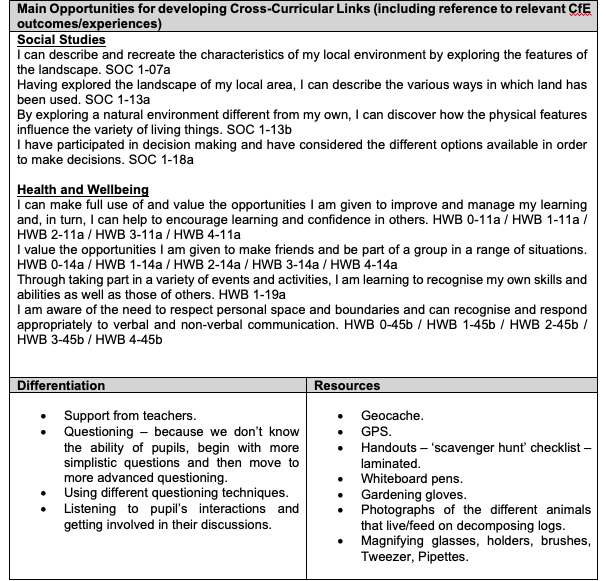
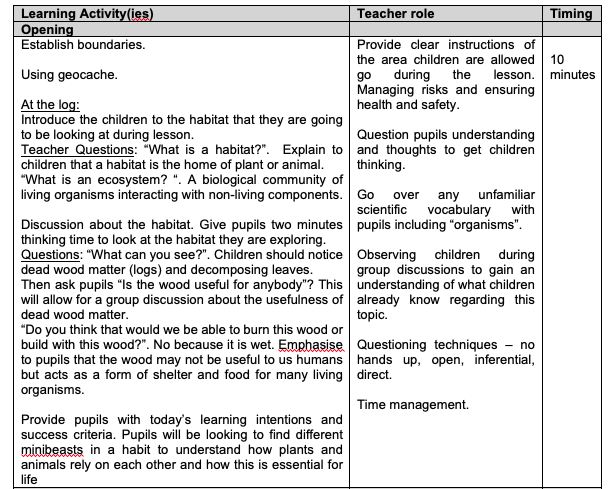
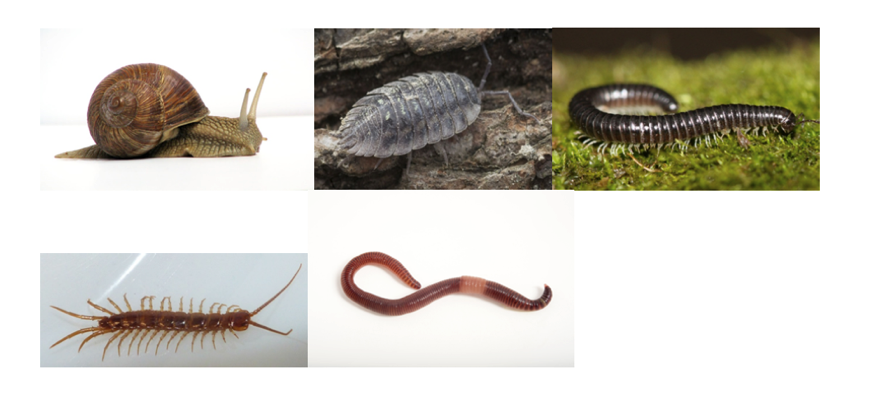
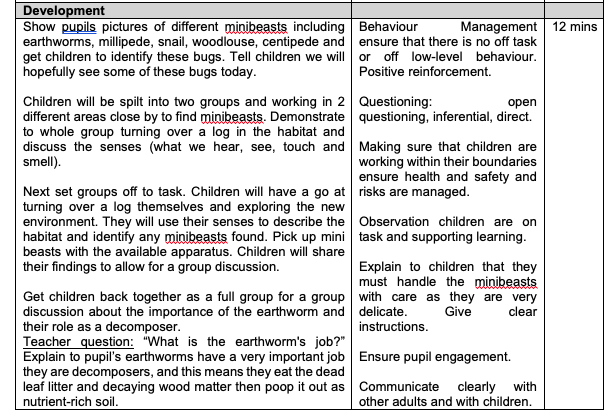
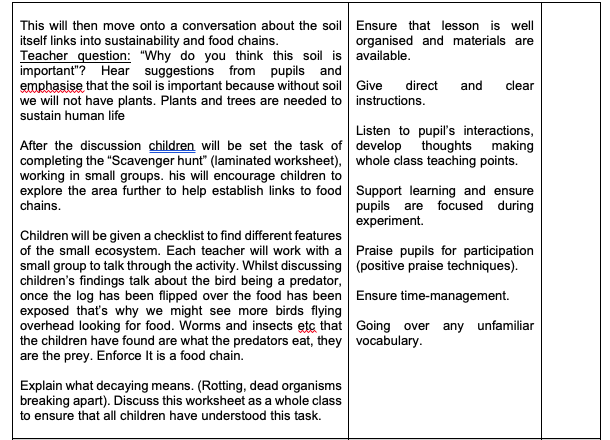

Place responsive pedagogy involves using the outdoors with the aim to understand and improve human and environment relations (Mannion, Fenwick, & Lynch, 2013). The intent is to create a relationship of mutual interdependence (Brown, 2012). The pedagogy of place responsiveness does not only build relationships with the humans and the environment but between humans too (Gruenewald, 2003). To help learners to become place-responsive a teacher requires a fair amount of flexibility and creativity (Mannion, Fenwick, & Lynch, 2013). When outdoors anything can happen that can become a lesson in itself, such as an unusual organism is found. This does present a degree of unpredictability. Open-ended tasks that initiate discussions and opinions are vital (Mannion, Fenwick, & Lynch, 2013). If a lesson is set in stone everything becomes regimental and inflexible, this can then restrict the amount of unintentional learning (Brown, 2012). When designing the lesson, we made sure to not inhibit any explorative learning. During the taught lesson, a log will be turned over and the learners will be looking for organisms that are decomposers, such as woodlice and earthworms.
Sustainability in education is described as the development that meets the needs of the present without jeopardising the ability of future generations to meet their own needs (Prince, 2010). To become a registered teacher with the General Teaching Council for Scotland (GTCS), teachers must show several key professional values. These include equality and justice as well as sustainability (General Teaching Council for Scotland, 2012). The GTCS states that these are core to a professional teacher’s values. It is not just about recognising the rights and responsibilities of the current generation, but also the future generations too (General Teaching Council for Scotland, 2012) (Prince, 2010). It is important for children to explore what a sustainable lifestyle is by seeing and working within it and not just taught about it (Brundiers, Wiek, & Redman, 2010) (Prince, 2010) (Ballard, Dixon, & Harris, 2016).
In the taught lesson, earthworms were usually found. This facilitated a teacher lead discussion on the importance of earthworms and their vital function of converting decomposing plant matter to nutrient-rich soil. It was stressed that without earthworms (and other decomposers) we probably would not have the wide range of food-producing plants, which would have a knock-on effect on humans resulting in food shortages. The children were questioned on what could be done to ensure that earthworms continue to thrive in our ground and soil. This discussion contained a mixture of inferential and open questions allowing a wide range of answers. One group discussed how fruit and vegetable discards from the kitchen could be placed onto compost heaps rather than into the bin. In the final lesson, the children would partake in a carousel activity that featured three questions. Two of them where “What causes a food chain link to be removed?” and “What can we do to prevent food chain links being removed?”. After watching a video, the children will have discussed with the teacher some of the causes of the removal of links from the food chain. This will perhaps lead on to the question: what can we do? However, just this experience will not make the children fully understand and appreciate sustainability.
The children need to continue to take part in outdoor lessons that feature sustainability that build upon the previous ones (Brundiers, Wiek, & Redman, 2010). After visiting a local area several times children will start to build a relationship with that location (as discussed above), this will result in the children becoming more attached to the local environment and more willing to protect it (Grren & Somerville, 2015). Therefore, the lessons planned will have either created or built upon the awareness of the need for sustainability in the children, but to get the best awareness and action, children need to consistently take part in outdoor learning in a familiar place.
To conclude, the lessons planned to ensure that the learners will become place responsive, will learn more about the scientific concept and will become more sustainable. To become place responsive and build a relationship with the environmental location (Mannion, Fenwick, & Lynch, 2013) a learner would have to go to the outdoor learning area several times. Although this was not possible with the lessons planned, we hoped that through the experience the learners would build a small relationship with the area through the activities they took part in. If the lessons were planned to happen in school grounds, I would expect to take the children consistently over several weeks to further explore the biodiversity and interdependence. The lessons planned will ensure that the children went away with a greater knowledge of biodiversity and interdependence, especially the biodiversity of the Scottish woodland floor.
Sustainability is more important than ever more. The role of teachers is to facilitate children’s understanding of the need for sustainability. During the lesson planning, we made sure that through inferential and open questioning the children will become more aware of the importance of sustainability. Overall, I felt that this was a worthwhile exercise, creating the experience for student teachers to develop and plan as well as teach an outdoor lesson while taking into account the three concepts of place responsiveness, science context and sustainability.

